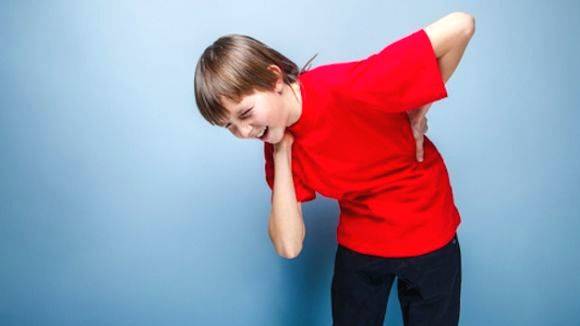

Bone and joint pain is one of the commonest symptoms which causes anxiety to the parents and urges them to bring their kids to see a Paediatric or Orthopaedic specialist. The causes of musculoskeletal pain in growing children are numerous and most often benign. Neverthless, there are certain situations where this symptom can be a fore runner of serious ilnesses that require prompt evaluation, early diagnosis and treatment.
Growing Pains- This by far is the most common diagnosis given for a child aged between 3 and 8 years who present with lower limb pain. The pain is most severe at night time and often the child will request his/ her parents to give them a proper massage of the calf muscles. This symptom can run for several weeks or months or sometimes even years. The exact cause gor Growing pains is not known. The fact that these children are very much active in the day time is a clue to the benign nature of this condition. Extensive evaluation like blood tests and Xrays are not required if the symptoms are typical and if there are no clinical signs of other serious problems.
The parents are counselled about the harmless nature of this condition. Usually the pain will subside with symptomatic measures like massages and local applications.
Infections- Infections in the bone and joint can happen in children and usually are secondary to infection elsewhere in the body. The child will be very sick and will have high grade fever as opposed to a child with growing pain. Bone and joint infections have to be diagnosed early and promptly treated with antibiotics for sufficient period- atleast 3-6 weeks. If there is pus in the joint or inside the bone it has to be removed surgically.
Inflammatory arthritis- Rheumatoid arthritis is an inflammatory arthritis which is common in adult women. Similar type of arthrits can occur in children- this condition is called juvenile inflammatroy arthrits. This disease is characterised by pain and swelling in single or multiple joints. The affected joint will be swollen and stiff. The child may have early morning stiffness which prevents them from doing day to day activities once they wake up in the morning. A severe type of inflammatroy arthritis is characterised by fever, generalised weakness and multiple joint swellings.
Inflammatroy arthrits in children needs to be treated aggressively with medications. Untreated arthritis can cause early joint damage, growth distrubance and deformities of the affected parts. Even though there is no curative treatment, the joint inflammation can be adequately controlled by newer medications. Ideally these children need to be seen by a Paediatric Rheumatologist. The disease can affect other parts especially the eyes; hence regular follow up by an eye specialist is also mandatory.
Certain tumours affecting the bone or the bone marrow can present only with bone pain initially. Severe bone pain in a child that is localised or generalised, not responding to ordinary pain killers and that is associated with other symptoms like weight loss, un explained fever and localised swelling is cause for worry. Laboratory tests and Imaging studies like Xrays or MRI scan may be needed to identify the problem.
Hip pain in young children
Pain and limping is a very common symptom in children aged 2 to 8 years. Usually this follows an attack of common cold or flu or ear infections. This is because the lining of the hip joint or some times the knee joint gets inflamed secnodary to the infection. This causes pain and limitation of movement of the hip joint. This is a transient phenomenon and responds well to simple pain kileers and rest.
If recurrent hip or knee pain occurs in children Xrays may be needed to identify a condition called Perthes disease of the hip. Perthes disease is caused by lack of blood circulation to the upper spherical part of the thigh bone. The affected part of the bone dies and the bone collapses; luckily the condition heals spontaneoulsy over a period of time without much problems especially in children less than 6 years of age. Older children with this condition may need surgery to prevent damage to the spherical shape of the bone.
Bone pain in adolescents- Localised pain over the growing parts of the bone is very common in adolescents. The condition is called apophysitis (apophysis is the growing part of a bone) and can affect the knee cap (patella), upper of the leg bone or the heel bone. The pain is brought on by strenuous activities like running or jumping. The condition is often harmless; activity restriction and splinting will relieve pain in most situations.
Obese adolescents with groin pain and abnormal walking pattern may have a condition called slipped femoral epiphysis. This is a condition where in the spherical upper part of the thigh bone (thigh bone is called femur) slips from underlying bone through the growth plate. The growth plate is a weak structure which adjoins the spherical bone end to the main part of the bone. In adolescent children who are obese and those who have hormonal problems affecting the thyroid or other glands, the slippage of bone can cause severe deformity and pain. They need to be treated by early surgery to prevent further slipping or to prevent deformity of the bone. If left untreated this can cause early wear tear damageof the joint and premature arthritis.
From the preceeding discussion it is clear that bone and joint pain in children is very common and often the situation is harmless. Persistent symptoms warrant a prompt referral to a Paediatric Orthoapedic surgeon for further evaluation and management.
Dr. VINOD KRISHNAN V
CONSULTANT ORTHO PAEDIATRIC SURGEON - PAEDIATRIC NEURO MUSCULAR DISORDER
KIMS TRIVANDRUM